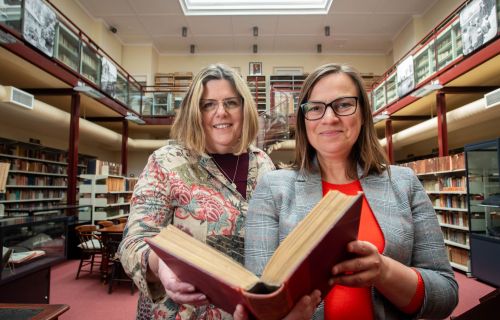Local Heritage on the world stage
With boundless opportunities for communities should it be successful, the bid for the World Heritage listing of several significant sites across the Victorian goldfields is gaining momentum across the state.

Living in Ballarat, it’s easy to take for granted the significance of the region’s goldrush history.
Beginning in 1851, Victoria’s goldrush had profound impacts not only on the country, but on mass migration across the globe. Furthermore, according to global heritage experts, the Victorian Goldfields is currently the “most extensive, coherent and best-surviving goldrush landscape” in the world.
That’s why the City of Ballarat is partnering with 14 other Victorian local governments to develop a bid for the World Heritage listing of several globally significant sites across the Victorian Goldfields.
While the bid is still in the tentative listing stage, it is gathering momentum. With a $3.8 million State Government commitment to this and one other project* and a new member of the bid team coming on board to engage communities, it’s an exciting stage in the multi-year bid process.
Sharing an extraordinary story
The World Heritage bid provides an opportunity to share the region’s extraordinary story with people from across the globe.
City of Ballarat World Heritage and Regional Development Lead Susan Fayad, who is spearheading the bid with her colleague in Bendigo, says the global significance of the Victorian goldrushes extends beyond “the things that happened and the things that were built”.
“This is a layered story of the complexity of who we are today — it’s the First Nations people and their stories, it’s the geology, it’s the people who came from such a diverse range of places from around the world, and it’s our culture and economy today,” she says.
“There’s this melting pot of people, culture and environmental degradation that was going on, and we have to tell that full story.”
The experts back up the significance of the region’s history, too.
UK World Heritage expert Barry Gamble has visited the region and has confirmed that the region is home to the best gold rush cities in the world.
“We’re not arguing that these are the best, we know they are the best in the world,” Susan says.
Benefits for the whole region
While tourism is the obvious benefit of World Heritage listing, Susan says there are boundless opportunities for community transformation should the bid be successful.
From safe drinking water to increased mobile reception, increased tourism to sites that currently receive minimal visitation could be a catalyst for increased services and transformation to communities across the state.
“This is the time now to start thinking about how we can leverage the bid, how we can use it as a catalyst for bringing benefits to Ballarat and other regional places,” Susan says.
Understanding the needs of impacted communities is a key part of the bid development. That’s why City of Ballarat World Heritage Engagement Officer Lana Epshteyn has come on board.
Lana is facilitating a Victorian Goldfields roadshow, in which she and other members of the bid team will be travelling across the state to hear from communities about what is important to them in relation to the bid.
“It’s happening already organically, but we are also formalising events that will hopefully bring communities on board that hold information about the Victorian Goldfields,” she says.
“We really need everybody to come on board and think creatively about how we could leverage this global exposure for the benefits of local communities.”
*The other project is the Melbourne Trades Hall, which is part of a trans-national World Heritage bid.